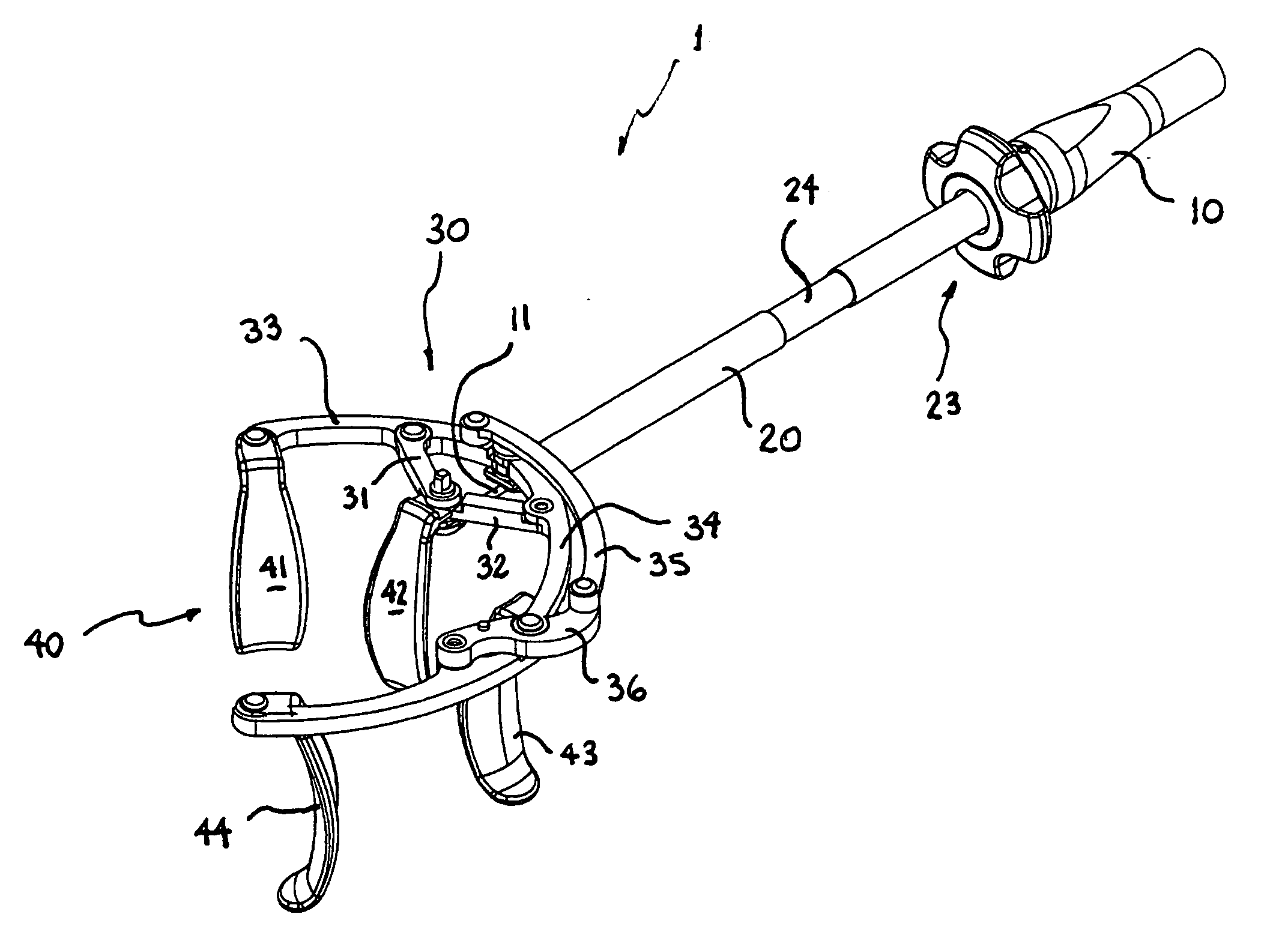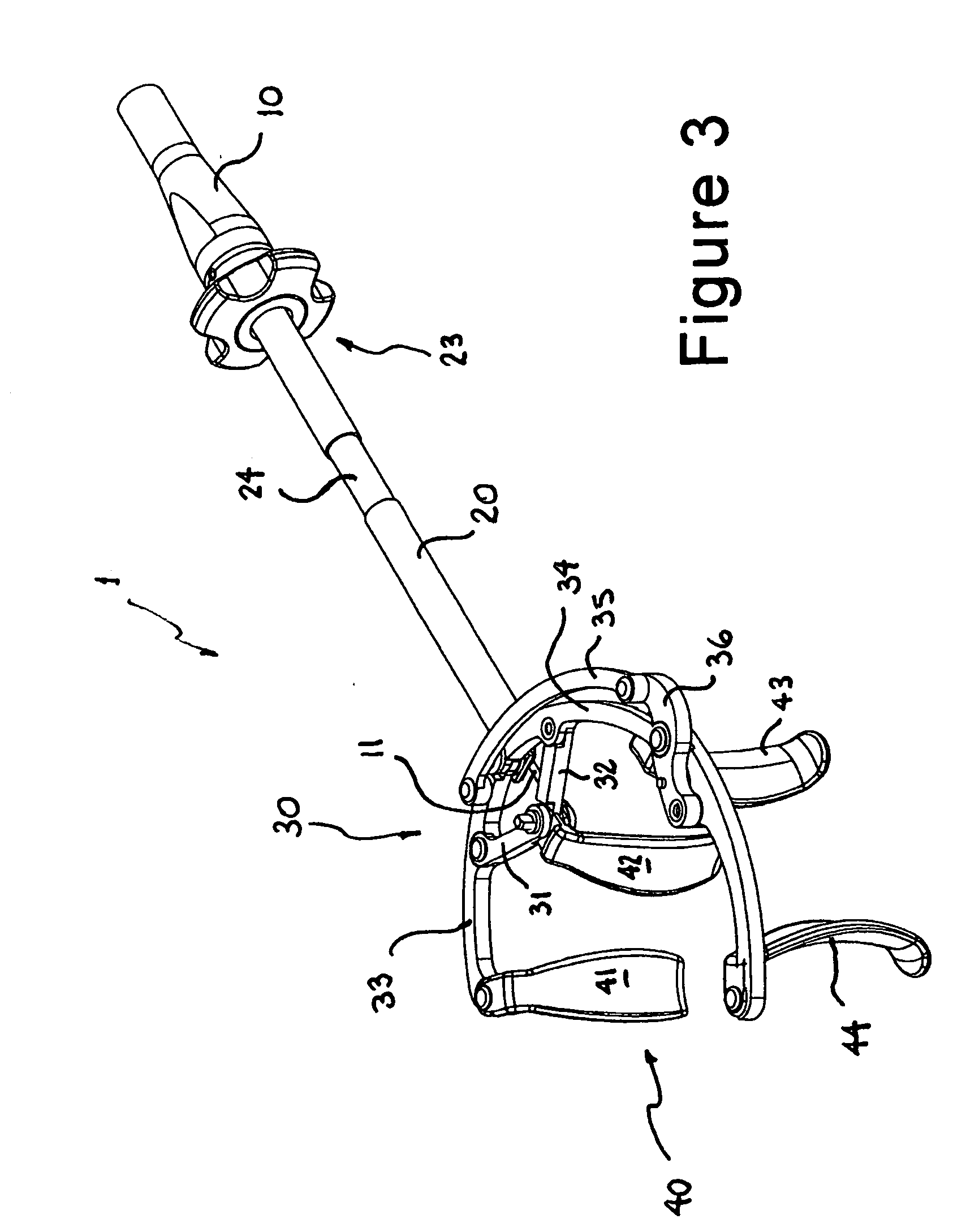Adaptable tissue retractor with plurality of movable blades
a tissue retractor and plurality technology, applied in the field of surgical instruments, can solve the problems of insufficient stiffness of the retractor to be able to positively retract the body tissue, time-consuming associated surgical setup, and inability to adjust or adapt the tissue retractor end of these existing retractors
- Summary
- Abstract
- Description
- Claims
- Application Information
AI Technical Summary
Benefits of technology
Problems solved by technology
Method used
Image
Examples
Embodiment Construction
[0023]With reference to FIGS. 3 and 7, tissue retractor 1 is comprised of an actuator or actuating means 10, a tubular housing 20, a linkage mechanism, assembly or arrangement 30, and a plurality of tissue-contacting, tissue-engaging or tissue-retracting blades, fingers or members 40. Linkage arrangement 30 is mechanically coupled to tubular housing 20 at a first or distal end 21 thereof, through mechanical joint 22.
[0024]Linkage assembly 30, as a whole, is pivotingly engaged and able to pivot relative to housing 20 about pivot axis 510, regardless of the blade configuration assumed by tissue-engaging blades 40 and by virtue of flexible cable 11 as will be described in greater detail below. Linkage assembly 30 is able to articulate in a multitude of different linkage configurations, and consequently able to transmit a multitude of blade 40 spatial geometries, relative to said housing. As such, tissue retractor 1 is adaptable or adjustable to the desired retraction geometry or config...
PUM
 Login to View More
Login to View More Abstract
Description
Claims
Application Information
 Login to View More
Login to View More - R&D
- Intellectual Property
- Life Sciences
- Materials
- Tech Scout
- Unparalleled Data Quality
- Higher Quality Content
- 60% Fewer Hallucinations
Browse by: Latest US Patents, China's latest patents, Technical Efficacy Thesaurus, Application Domain, Technology Topic, Popular Technical Reports.
© 2025 PatSnap. All rights reserved.Legal|Privacy policy|Modern Slavery Act Transparency Statement|Sitemap|About US| Contact US: help@patsnap.com



